Integrated Water Resource Management
A New Focus to Achieve Water Quality
Integrated Water Planning Management is now in its 2nd phase! For information on the next Water Quality Planning Management 10-year period visit the Integrated Water Planning Management 2 webpage.
Connecticut is using a new approach called Integrated Water Resource Management as the basis to address the existing goals of protecting and restoring Connecticut's waters. This approach is based on six key elements: Prioritization, Assessment, Protection, Alternatives, Engagement and Integration. This process allows Connecticut to identify areas for action plan development based on state-specific concerns and provides sufficient time to develop plans using flexible approaches under existing TMDL authority and doesn't create new regulations.
Protecting and Restoring Water Quality
To ensure clean waters, the Connecticut Department of Energy and Environmental Protection (CT DEEP) studies our waters through our Water Quality Monitoring and Assessment Program. We focus on how our waters are used, such as for drinking water, fishing, swimming and for supporting healthy wildlife and fish communities, as well as the water quality needed to support these activities. Information on the health of Connecticut’s waters are reported on every two years in the Integrated Water Quality Report to Congress. We find some waters which are not healthy and need some actions to bring back or restore good water quality. Other waters are healthy and have very good water quality, which needs to be maintained and protected. We establish plans and identify actions to achieve these restoration or protection goals and work with partners through voluntary and regulatory efforts to protect areas of good water quality and restore areas with poor water quality.
Through Integrated Water Resource Management, CT DEEP has identified areas for development of Action Plans through 2022. Over time, we may adjust the areas selected for plan development as new information and opportunities occur, with input from the public.
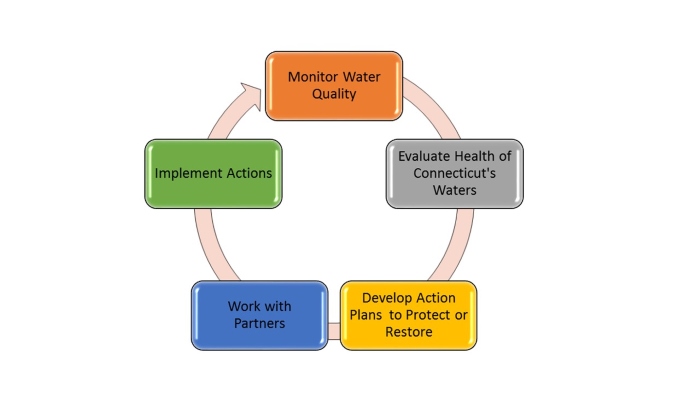
Background
Connecticut has taken this updated approach and used it as the basis to improve our process for restoring and protecting Connecticut’s waters through our Integrated Water Resource Management efforts. Through Integrated Water Resource Management CT DEEP is trying to work more effectively towards restoring and protecting our waters through developing partnerships and looking for flexible and efficient approaches to linking our environmental data and goals with partner’s actions that support restoring or protecting our resources. More information can be found in the Integrated Water Resource Management Fact Sheet.
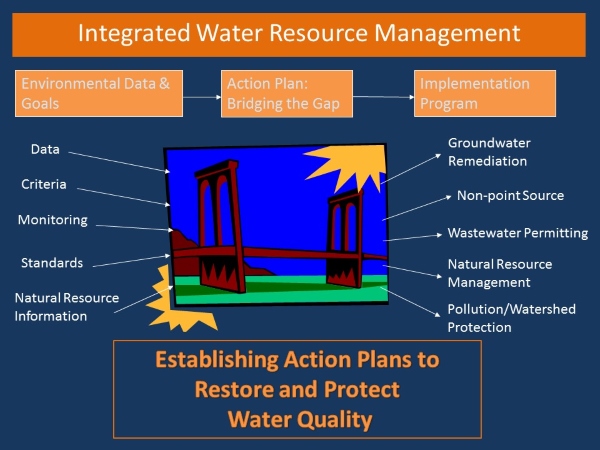
Key Elements of EPA's Vision for Integrated Water Quality Management
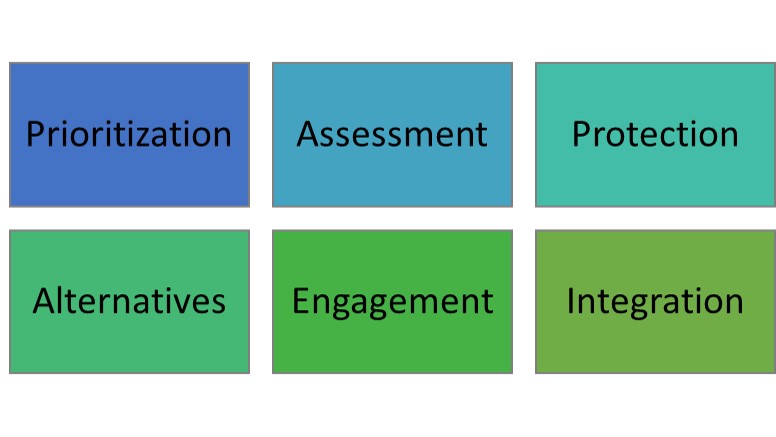
Waters and Watersheds for Action Plan Development
CT DEEP's Water Quality Focus Areas
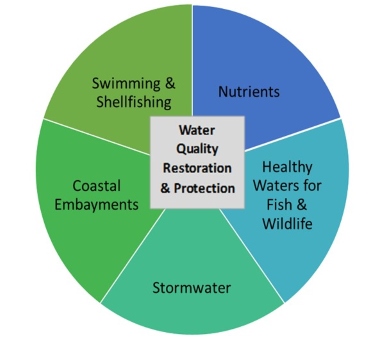
CT DEEP has finalized the initial set of waters for developing plans for protection or restoration of water quality. This was done through a detailed process relying on environmental data and an analysis tool developed by EPA called the Recovery Potential Tool. Additionally, other factors were considered such as input from regulatory and conservation programs across the agency, as well as areas with watershed plans or partners. Information on this process is available in the Technical Support Document: Identifying Watershed for Restoration and Protection Plans with Connecticut Integrated Water Resource Management Efforts. Public comments were solicited and a response to comments document prepared to support development of a final selection of waters targeted for action plan development.
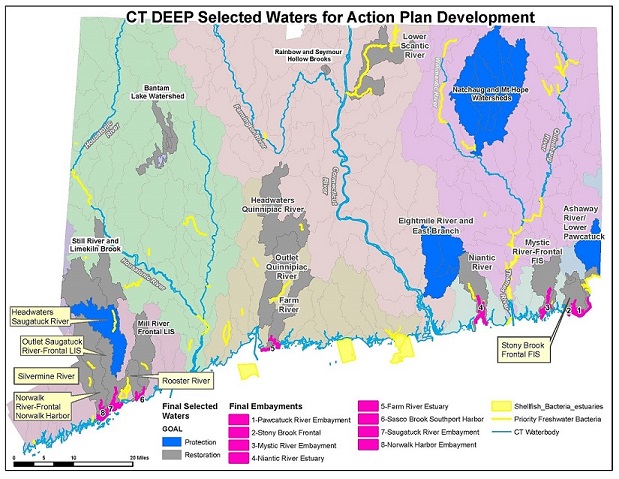
While many waters could benefit from developing a plan for restoration and protection, this list of waters represents areas where we intend to develop plans over the next few years while maintaining overall statewide water quality efforts. This list of selected waters can be revised periodically every two years through the Integrated Water Quality Report process. These revisions will be based on consideration of CT DEEP resources available to support developing and implementing action plans and other changes in a watershed. Any revisions to the list of selected waters will be open to public input to provide opportunity for comments on any changes prior to implementing the list revisions. Over time, additional waters will be identified for development of water quality restoration and protection plans.
Next Steps
CT DEEP will also conduct targeted outreach efforts to connect with partner groups in the selected waters, including coordinating with US EPA on work within Connecticut estuaries and Long Island Sound. If you represent a group in any of the selected waters, please reach out to CT DEEP to offer assistance with the goals of IWRM. A group may be able to assist with data collection, potential source identification or other needs for action plan development.
As action plans are developed, additional site specific public comment opportunities will exist to enhance the documents with local knowledge and input.
Presentations:
- CT DEEP Integrated Water Resource Management Update
- Save The Sound Unified Water Study
- Bantam Lake Presentation
- Upper Natchaug River Healthy Watershed
- Public Information Session Presentation
Related Documents:
- Appendix-C-2-IWRM-Comments-and-Responses
- Integrated Water Resource Management Fact Sheet
- Integrated Water Resource Management Final Report
- Integrated Water Resource Management in ConnecticutStory Map (covers the process for initial DRAFT list of Selected Waters)
- Long-Term Vision for Assessment, Restoration and Protection under the Clean Water Act Section 303(d) Program
- Technical Support Document: Identifying Watershed for Restoration and Protection Plans with Connecticut Integrated Water Resource Management Efforts
- Appendix E of the Technical Support Document
- List of Submitted Comment Letters
- Formal Response to Comments and Final List of Selected Waters
- Final Selected Waters Map

